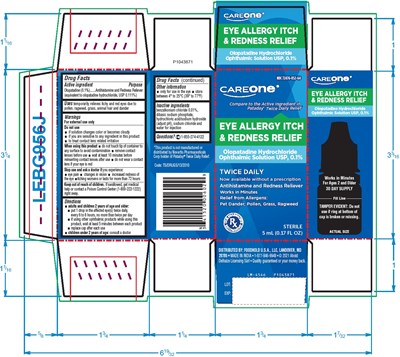Product Images Olopatadine Hydrochloride
View Photos of Packaging, Labels & Appearance
Product Label Images
The following 2 images provide visual information about the product associated with Olopatadine Hydrochloride NDC 72476-852 by Retail Business Services, Llc., such as packaging, labeling, and the appearance of the drug itself. This resource could be helpful for medical professionals, pharmacists, and patients seeking to verify medication information and ensure they have the correct product.
olopatadine-figure-1 - olopatadine fig1

This is a description for an ophthalmic solution named PN T0RRY PRl REDNESS RELIEF. It is made in India and distributed twice daily by Foodhold US.A. The solution contains Olopatadine Hydrochloride and is for use only in the eye. It is sterile and should be stored at temperatures between 4°C to 25°C. The user should ensure the bottom of the cap is not broken or missing before using it. A code is provided for quality assurance and money-back guarantee.*
olopatadine-figure-2 - olopatadine fig2

CAREONE EYE ALLERGY ITCH & REDNESS RELIEF is an antihistamine and redness reliever solution that helps relieve itchy and red eyes due to allergens such as pollen, pet dander, grass, and ragweed among others. It is for external use only and should not be used if it changes color or becomes cloudy. The product should not be used if you are sensitive to any of its ingredients. Before use, remove contact lenses, wait at least 10 minutes before reinserting them. Also, the product should not be used by children under the age of two, except on a doctor's prescription. The solution is only for use in the eyes, and it should be stored between 4 to 25°C. If the use of the product doesn't provide relief and presents eye pain, changes in vision, or increased redness, medical attention is required. CAREONE EYE ALLERGY ITCH & REDNESS RELIEF is distributed by FOODHOLD U.S.A., LLC and comes as a 30-day supply.*
* The product label images have been analyzed using a combination of traditional computing and machine learning techniques. It should be noted that the descriptions provided may not be entirely accurate as they are experimental in nature. Use the information in this page at your own discretion and risk.